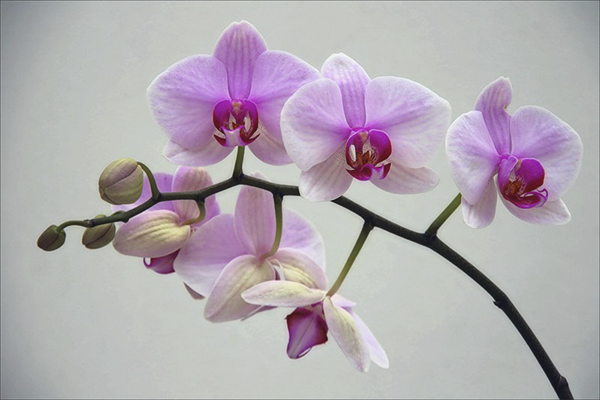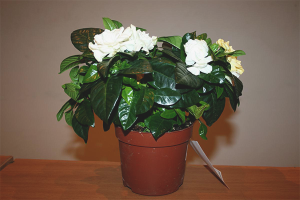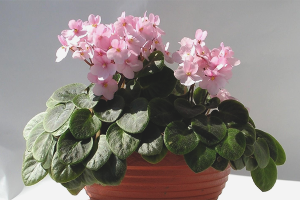The content of the article
Orchid - a beautiful and delicate flower, which is becoming increasingly popular due to its beauty. Many novice growers say that the orchid flower is as beautiful as capricious. Indeed, this plant needs special living conditions, it often dies from inappropriate temperature, humidity and lack of light. The aspect of pruning a plant after flowering is also very important.
As you know, an orchid blooms for a very long time - up to six months. But sooner or later this riot of colors comes to an end, and the orchid eventually fades. This can be seen on dry inflorescences and yellowing peduncle. Pruning is very important for the orchid - if you do not cut the peduncle in time, the flower can give all its strength to restore the yellowed stem.Literate pruning will accelerate the next bloom, which usually occurs in 3-5 months.
When to prune orchid after flowering
When choosing the time pruning should pay attention to the plant variety. Some orchids bloom several times a year. Others, on the contrary, tsvetonosyat once a year, but the flower pleases the eye long enough.
It is best to cut the orchid before hibernation, when the plant will no longer actively grow and goes on a "well-deserved vacation." Like most pot flowers, the orchid retires in October or November. Even if you do not know the variety of your orchid, the characteristics of its growth, cut the plant in the second half of autumn - you can not go wrong.
How to understand that the orchid has faded
So, if the tip is still alive on the peduncle, if it is green, it means that the plant has not yet faded. In this case, you can cut the peduncle a few centimeters above the tip. So you can achieve re-flowering of the old peduncle. However, it is worth noting that this is a risk. If the old peduncle does not bloom again, the flower will give all the power to restore it, without giving enough nutrients to the new young peduncle. So be careful when trimming and leave only the really viable "tip."
How to prune an orchid
As mentioned, the orchid can be cut in two ways. The first is to cut only the top with faded flowers and leave the green appendix. It may bloom again or just turn yellow and die of old age. In other cases, the stem of the peduncle is cut off completely, almost under the root. You need to leave only a small stump size of 1 cm.
Orchids are usually pruned with garden shears, scissors or a knife. When pruning you need to be as careful as possible - do not touch the rest of the leaves and the stems of the plant. It is very important to disinfect the instrument with bleach before the procedure.Getting inside the stem of bacteria can lead to the death of the flower, because the orchid is so capricious and vulnerable.
When the peduncle is cut, look at the cut. Often the stem core is hollow. If water with bacteria and microbes gets inside, it can lead to rotting of the stems and the flower as a whole. Therefore, it is necessary to “close up” the cut with beeswax. And when watering, try to pour water directly under the root, so as not to fall on the cut.
When pruning should pay attention not only to the faded stalk. Look at the roots of the flower. Normally, the roots of the orchid are green, grayish and certainly elastic. If the roots are dry and brittle, they should be removed. Carefully cut off the dead roots to give the flower the opportunity to plant a new, healthy root system. After this, treat the cut sites with a special antiseptic, which can be purchased at the florist shop. It will protect vulnerable areas from getting inside the root of bacteria.
Watering orchids after pruning
Watering orchids should be moderate. This plant can be for a long time without water. To understand whether a flower needs watering at the moment,need a little wand. Stick it 5-7 cm into the pot. If the stick is wet - the flower should not be watered, if dry - can be watered. It is best to water the orchid in the morning or in the afternoon, because at night the water is not absorbed by the flower.
In winter, watering an orchid is needed very rarely. The fact is that water, penetrating into the soil, rises to the stems and leaves with the help of a force that appears from the powerful solar lighting. And if it is dark and sad in the winter on the windowsill, this force simply does not exist, and the water remains in the roots of the plant. If the soil is loose, the liquid, of course, evaporates. However, if the earth is dense, the water remains in the root system, from which there is rot. So know, if the orchid's roots are rotting, it is not a consequence of excessive watering, it is a consequence of a lack of sun.
It is noteworthy that after transplantation and pruning the plant does not need to be watered, as we usually do. This is necessary so that the cut off painful roots “tightened” their wounds. If you water the plant immediately after transplantation, it may begin to rot.
Orchid care after pruning
In fact, flower care after pruning is not much different from ordinary activities.The plant also needs spraying the leaves. High humidity contributes to good growth and development of the plant. Spray need not only external, but also the inner side of the leaves.
The pruning period is at the end of autumn, after which the plant usually turns into a state of rest. At this time, the flower is better not to feed or minimize the amount of fertilizer. After pruning, the orchid can be transplanted. To do this, you need to take the pot wider than the previous one, make a drainage, fill the pot with the substrate, and then transplant the flower along with the roots.
An orchid is like a little child. It requires attention, care and love. However, it pleases the eye with beautiful delicate flowers. Proper care of the plant will help you grow a beautiful work of living art on the windowsill.
Video: how to prune the flower of an orchid













To send